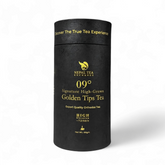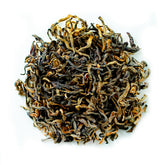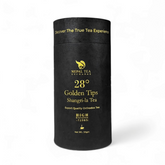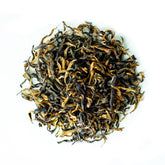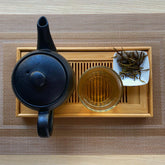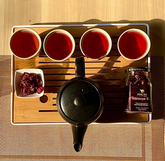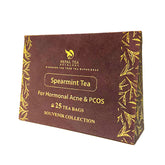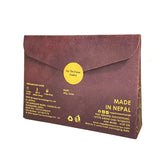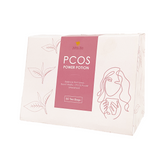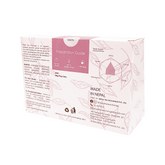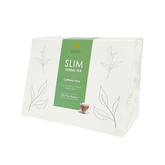Orthodox vs. CTC: Understanding Nepal’s Two Tea Worlds
The Dual Identity of Nepali Tea: A Tale of Two Processing Philosophies
Setting the Himalayan Context and Global Positioning
Nepal holds a unique place in the global tea industry, especially due to its Eastern Himalayan location. Its most productive tea areas, particularly the Ilam district, share key geography and climate with the famous Darjeeling region just across the border in India. This high-altitude terroir (environment), often exceeding 6,000 feet above sea level, naturally slows the leaf growth, resulting in flavors that are more concentrated and expressive than those grown at lower elevations. This high quality allows Nepali tea to compete directly with, and often surpass, premium teas from established regions like India and China.
Tea is the world's second-most consumed drink, driving a massive global industry valued at over $17 billion annually. While Nepal is a small player in this market, exporting $25.3 million in 2023, its focus is not on volume but on high-value specialty niches. This strategy is fundamentally supported by the clear division of its domestic industry: Orthodox tea targets the high-value international export market, while Crush, Tear, Curl (CTC) tea supplies the massive, highly affordable domestic market, which accounts for roughly 95% of national consumption.
Intent and Philosophy: Craftsmanship vs. Consistency
The difference between Orthodox and CTC processing represents a core philosophical split in tea making. The goal behind Orthodox production is focused squarely on preserving the natural virtues of the leaf. This traditional method values delicacy, complexity, and maximizing the authentic tea experience. Orthodox teas, which include black, green, white, and oolong types, are prized globally by experts for their layered flavors.
In sharp contrast, the core goal of CTC processing is speed, efficiency, and standardization. This method was designed for faster, high-volume production of a reliable, standard quality of black tea. It yields a strong, dark liquid with a distinctly sharp flavor—a profile deliberately engineered to be robust enough to handle the addition of milk, sugar, and spices, as is common in traditional South Asian tea preparation (Chai).
The Mechanics of Production: A Technical Breakdown
Orthodox Processing: The Art of the Whole Leaf
Orthodox processing is a careful, traditional, and time-intensive process designed to keep the whole tea leaf intact. The method typically begins with the precise hand-plucking of tender tea shoots. This is followed by several specialized, labor-intensive steps:
-
Withering: Leaves are gently dried to reduce moisture, making them pliable for handling.
Rolling: This gentle but crucial stage breaks the leaf’s cell walls without shredding its structure. This step initiates flavor development and creates the distinctive appearance of loose-leaf tea (twisted or whole). - Oxidation (or Fermentation): The rolled leaves react with oxygen in a time-controlled process, closely monitored by a trained tea master to achieve the exact desired flavor characteristics.
- Drying: Heat is applied to halt the process, yielding the final product.
This traditional method often takes more than 24 hours to complete, requires constant oversight, and results in higher production costs due to the reliance on skilled, traditional labor. Because the leaf’s integrity is maintained, Orthodox methods allow for the creation of diverse specialty teas, including black, green, oolong, and white varieties.
CTC Processing: High-Volume Mechanization
CTC, which stands for Crush, Tear, and Curl, is a highly mechanized method of tea production. This process was developed to quickly process black tea leaves for maximum speed and yield.
The core of the process involves passing fresh, whole leaves through a series of cylindrical rollers fitted with hundreds of serrated blades. These machines quickly crush, tear, and curl the leaves into small, hard, uniform pellets or granules.This quick crushing dramatically increases the surface area of the leaves, speeding up oxidation and resulting in a finished product that brews quickly and powerfully.
The efficiency of CTC processing is its main advantage. It is fast, highly automated, and substantially lowers labor costs compared to Orthodox methods. The output is consistent and affordable, making it a widely accessible commodity product.
Key Processing Comparison: Orthodox vs. CTC
The different goals and methods of the two production styles are clearly shown when comparing their key features:
Table 1: Orthodox vs. CTC Processing and Quality Overview
|
Feature |
Orthodox Tea (High-Value) |
CTC Tea (High-Volume) |
|
Primary Goal |
Preserving leaf quality; Complex flavor |
Speed, consistency, mass production |
|
Processing Method |
Traditional rolling, gentle manipulation |
Mechanical crushing (Crush, Tear, Curl) |
|
Leaf Integrity |
Whole/Large leaves (Oolong, Green, Black) |
Small, uniform pellets, granules, or dust |
|
Processing Time |
Longer (often 12–24+ hours) |
Rapid (a few hours) |
|
Cost of Production |
Higher (skilled labor dependent) |
Lower (mechanization dependent) |
|
Flavor Profile |
Delicate, nuanced, floral, complex |
Strong, brisk, dark, highly sharp (astringent) |
While some critics dismiss CTC tea as "dust tea," its invention was revolutionary because it popularized and democratized tea consumption globally.17 The processing difference dictates the ideal use: CTC is excellent for a strong base for daily, heavy-brew consumption, while Orthodox is necessary for the delicate, savored experience sought by connoisseurs.
The Terroir Divide: Mountains vs. Plains
Nepal’s geography separates its two tea worlds, creating a natural division based on product type, market intent, and production scale.
Orthodox Tea: The Himalayan Specialty Segment (Ilam and the Hills)
Orthodox tea production is tied to the high-altitude, mountainous regions of Nepal. It is primarily processed in six key districts in the eastern and central hills: Ilam, Panchthar, Dhankuta, Terhathum, Sindhulpalchok, and Kaski. These areas, situated between 3,000 and 7,000 feet above sea level, provide the cool temperatures and unique environment necessary for cultivating the Chinese variety of the tea plant, Camellia sinensis var. sinensis.
The slow growth at this high altitude concentrates flavors, yielding highly aromatic and distinct teas. This artisanal focus, combined with the prevalent structure of small farms and cooperatives in Nepal, ensures exceptional quality control and a clean, expressive flavor profile that often outperforms mass-produced alternatives.
CTC Tea: The Domestic Mainstay of the Terai (Jhapa)
In contrast, CTC production is centered in the hot, humid, and lower-altitude Terai plains, mainly in the Jhapa district. This region uses the high-yielding Assam variety of the plant, Camellia sinensis var. assamica, which thrives in these conditions and contributes to a stronger, bolder infusion.
Jhapa is the volume engine for Nepal’s tea industry. For example, in the Fiscal Year 2021/2022, Jhapa alone was responsible for 18,902,800 Kg of CTC production. This massive output is vital for supplying the domestic market, which consumes CTC tea almost exclusively (95% of domestic consumption) due to its affordability and suitability for traditional milk preparations.
Geographic and Economic Segmentation
The production segments show a clear division of labor in the Nepalese tea sector:
Table 2: Nepali Tea Production Segmentation and Trade Focus
|
Category |
Key Production Region |
Altitude Range (approx.) |
Tea Plant Variety |
Primary Market Focus |
|
Orthodox |
Ilam, Dhankuta, Panchthar (Hills) |
3,000 – 7,000 feet |
C. sinensis var. sinensis (Chinese) |
Export (Specialty/Value) |
|
CTC |
Jhapa (Terai Plains) |
Lower Altitudes |
C. sinensis var. assamica (Assam) |
Domestic Consumption (Volume/Commodity) |
The reliance on smallholder farmers (over 15,198 individuals recorded) is a defining feature of the Nepali tea industry and is directly linked to the exceptional quality of its Orthodox offerings.This meticulous, small-batch approach enhances quality and contributes significantly to the premium identity of high-altitude Nepali Orthodox tea.
Sensory Profiles, Chemistry, and Brewing Application
Flavor Nuance and Complexity (Orthodox)
Orthodox teas are designed to deliver nuanced flavor. The slow processing and use of the Chinese variety in the Himalayan environment yield a wide range of sophisticated flavor notes, from floral and sweet to rich malt and cocoa.These teas are complex, offering a layered sensory experience that changes subtly with each sip.
Strength and Briskness (CTC)
The flavor profile of CTC tea is engineered for maximum functional strength. The aggressive crushing process ensures rapid flavor extraction, resulting in a robust, dark liquor. This tea is strong, malty, and often astringent, providing the necessary 'bite' that holds up well when diluted with milk and heavy condiments.
Health Dynamics: Antioxidants and Extraction Science
Both styles come from the Camellia sinensis plant, but their processing methods cause differences in the release of beneficial compounds. Orthodox teas, keeping the whole leaf intact, infuse gradually, offering a broader spectrum of aromatic oils and flavonoids.
However, the tiny particle size of CTC tea affects how quickly its chemicals are extracted. Studies comparing processing modes show that the mechanical crushing dramatically increases the surface area, allowing a more rapid and potent release of core antioxidants and caffeine. For instance, research suggests that crushed green tea infusions (CTC style) may yield significantly higher levels of key compounds like EGCG compared to orthodox-processed green teas. The health difference is subtle: Orthodox offers diversity and a gentle infusion, while CTC provides a quicker, high-intensity extraction of major antioxidant components due to its fine size.
Comparative Evaluation of Biochemical Properties of Orthodox and CTC Black Tea [https://pmc.ncbi.nlm.nih.gov/articles/PMC9056637/]
Brewing Recommendations and Cultural Use
The preparation method depends entirely on the processing style. Orthodox teas are best prepared without milk or sugar, allowing the drinker to fully appreciate the subtle floral, fruity, and aromatic nuances.
CTC tea is engineered for a quick, energizing brew. It is the essential base for Masala Chai, the daily milk tea staple across South Asia. Its robust, sharp liquor perfectly complements boiling milk, sugar, and strong spices, making it capable of delivering a powerful cup even when heavily diluted.
Economic Realities: Export Value and Market Positioning
Pricing and Value Proposition
The cost of Orthodox tea reflects its labor-intensive nature. Because it requires careful hand-plucking and constant monitoring by a tea master over a process that can take to 24 hours or longer, Orthodox tea is significantly more expensive and commands a premium price in the global market.CTC tea, which benefits from rapid mechanization and high-volume production, is far more affordable and is sold as a mass-market commodity.
Nepal’s Global Tea Trade Strategy and Dependencies
Nepal’s total tea production in the Fiscal Year 2021/2022 was 26,379.49 metric tons, with 12,496.09 metric tons exported.In 2023, the value of total tea exports reached $25.3 million.Nepal National Tea and Coffee Development Board Production Statistics [https://old.teacoffee.gov.np/statistics]
The export strategy relies heavily on the neighboring market, India, which received $23.2 million of Nepal's exports in 2023. Historically, around 90% of Nepal's Orthodox tea production has been channeled through India for consumption or re-export.
However, the genuine high-value, specialty markets—which pay the necessary premiums for artisanal Orthodox tea—are largely overseas. The top destinations outside of India include Germany ($617k), Japan ($311k), and the United States ($181k). These are the crucial target markets for branded, high-quality Nepali tea.
OEC Official Trade Statistics on Nepal Tea Exports and Destinations [https://oec.world/en/profile/bilateral-product/tea/reporter/npl]
The Future of Nepali Tea: Branding and Quality Certification
The Nepali tea industry has faced challenges, including regulatory struggles related to meeting international pesticide residue standards and a lack of unified branding in foreign markets.The key strategic challenge is ensuring that high-quality Orthodox tea is not lost in the commodity market but is recognized internationally as a specialty product with guaranteed origin.
To address this, Nepal launched a crucial initiative: the trademark ‘Nepal Tea Quality from the Himalaya’. This official branding is specifically designed for Orthodox tea, serving as an indispensable tool to distinguish high-altitude, artisanal products internationally.By providing verifiable certification and quality assurance, the trademark allows exporters targeting markets like Germany and the US to guarantee the product’s origin and craft, helping to secure premium pricing.
News Report on Nepal’s Orthodox Tea Trademark Launch [https://kathmandupost.com/money/2020/09/23/nepal-s-orthodox-tea-gets-its-own-trademark]
The future growth of Nepal’s tea sector depends on leveraging global trends toward ethical sourcing, sustainability, and health consciousness. Given that Nepali tea benefits from small-farm cultivation and a pristine environment , strong branding is essential for establishing a definitive identity in the specialty tea sector.
Global Market Report on Tea and Sustainability Trends [https://www.iisd.org/system/files/2024-01/2024-global-market-report-tea.pdf]
Conclusion: Two Worlds, One Heritage
The split between Orthodox and CTC processing is the foundation of Nepal’s successful tea industry. These two production worlds—separated by geography, method, flavor, and price—serve entirely different and necessary economic functions.
Orthodox tea, grown in the high Himalayan hills of Ilam, represents Nepal’s artistic heritage and its ambition in the global specialty market. It uses time-intensive, skilled processing to yield complex, nuanced flavors for the connoisseur.
Conversely, CTC tea, produced efficiently in the Terai plains of Jhapa, is the engine for domestic affordability and cultural tradition, providing the strong, consistent base essential for the Nepali Masala Chai.
The future vitality of Nepal’s tea exports hinges entirely on further strengthening the identity and quality of its Orthodox segment. By strategically using the 'Nepal Tea Quality from the Himalaya' trademark, Nepal is ensuring that its high-altitude teas receive the international recognition and premium pricing they deserve, establishing a clear, sustainable position as a source of world-class, artisan tea.


